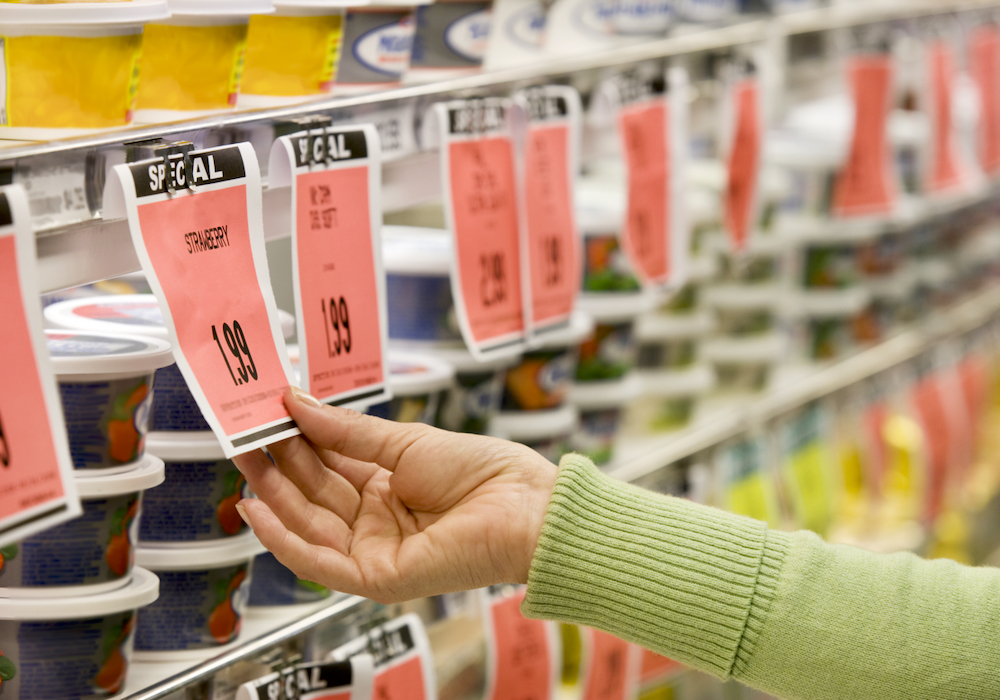Consumer food-buying behaviour changing rapidly

Canadian consumers have dramatically changed their grocery-buying patterns in the past year as food prices and housing inflation have squeezed their budgets. Demand and product changes in the food supply chain will affect farm commodities.
Read Also
Opinion: Production, productivity and climate change
Glacier FarmMedia – A tantalizing report from Farm Credit Canada recently estimated the riches that would flow if the productivity growth of…
Grocery store sales are down in Canada, even with product value inflation, which means less demand for farm products.
Why it matters: Consumer food sales trends have an effect on farm product values.
Food inflation had stabilized by the end of 2023, says Carman Allison, vice-president of thought leadership with Neilson IQ. In December the rate of consumer products inflation in Canada was 3.1 per cent, while in other places in the world food prices continued to rise to 6.1 per cent.
“We like to complain about the fact that our prices are high and they are versus the environment we live in. But we’re in a pretty good situation since grocery prices are rising at a much faster rate around other parts of the world,” says Allison, although he also said that people don’t really care about what’s going on around the world when they are feeling increases in their spending.
The pressure on consumers comes from compounded increases in costs over the past few years.
Someone who spent $100 on groceries before the pandemic will now have to spend $122 to get the same amount of food, Allison said at the recent Dairy Farmers of Ontario annual meeting.
American consumers are paying even more, spending $131 for products for which they used to spend $100.
In the grocery store, meat is now down to about two per cent inflation. Prices for produce, which grew quickly during drought and supply chain issues in 2022, decreased one per cent in December. Dairy product prices at retail continue to grow at about five per cent.
Commodity prices were down about 13.7 per cent by the end of 2023 from their 2022 high, says Michael Graydon, executive director of Food, Health and Consumer Products of Canada (FHCPC).
“They are still very high and still incredibly volatile.”
Even considering inflation, grocery sales are down one per cent in Canada, says Allison. Add in Canada’s rapid population growth of three per cent, and per-person sales are down about four per cent.
Alberta is seeing higher sales growth than other parts of the country, but if its population increase is taken into consideration, real growth per person is down.
Decreasing grocery sales are coming from consumers emphasizing essentials in their shopping.
“We want to make sure that we’re realizing that a lot of consumers are making some tough choices here,” says Allison.
“Thirty-two per cent of us have said, ‘you know what, I’m going to put together my shopping list and I’m just going to buy what I need.’ I know for a lot of people that’s their primary focus right now as a savings strategy.”
He says about 80 per cent of consumers have increased being more focused in their purchasing of just essentials in the past three months.
It’s much harder to sort out grocery sales numbers these days, with dollar and discount stores taking up more of the food sales number, especially in a down economy, and Allison says they don’t get numbers from dollar stores.
To cut back on food purchases, some Canadians are eating more leftovers and others are simply eating up to 20 per cent less food.
Another food cost-saving strategy that Allison is seeing is that consumers are less loyal to certain types of food and certain brands.
The Canadian Dairy Commission paused a proposed 1.71 per cent increase in the price of milk at the farm gate in October.
“There’s been a lot of discussion about the variability of costs for production and how to balance the needs of producers and keep milk prices reasonable for consumers,” said retiring Dairy Farmers of Ontario Board chair Murray Sherk. “We must also remember that consumers and their buying behaviour determine our market.”
Addicted to deals
Canadians have become avid buyers of food on sale, driven by necessity, but also by the many deals available in stores.
Half of grocery sales involve some sort of promotion with the product, says Allison. In the U.S. it’s about 27 per cent.
“Canadians are addicted to promotions. That’s just the way we shop.”
Private label products are also selling well, as they cost about 25 per cent less than premium brand products.
Processors caught in the middle
Grocery retailers might be getting the ire of politicians and consumers in Canada, but processors are feeling the squeeze too, as retailers have agreed to federal government requests to control food prices.
They can only do that by reducing their profits or pressing others in the supply chain to hold prices.
That’s challenging when inflation is hitting farm and product manufacturers, says Graydon, whose group represents processors of consumer goods, including food.
He says food manufacturers are struggling mightily to get the capital they need to continue to grow, as banks continue to conservatively hoard cash in case there are widespread defaults on mortgages as business and residential mortgages renew at much higher rates.
That puts a damper on the ability of Canadian operations to compete or to create new markets for agriculture products.
Half of the packaged foods on Canadian grocery store shelves are made outside of the country, says Graydon. Other companies are preparing to leave Canada as in many ways the business environment has become uncompetitive.
Members of the FHCPC process about 60 per cent of the agriculture production in Canada, says Graydon, so losing more processing could affect demand for farm production.
Source: Farmtario.com

